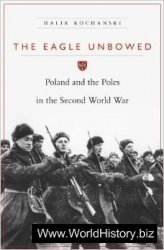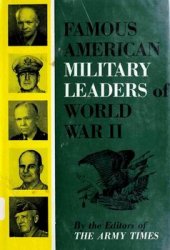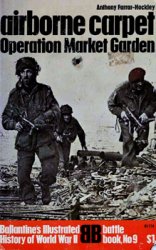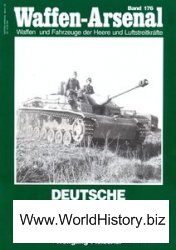While the Roman army of the Severan period was not unlike that of Augustus in many respects, the Roman army of Constantine was quite different. Many of the changes are conventionally attributed to Diocletian and his tetrarchic successors (including Constantine himself), but given the relative scarcity and often problematic character of the evidence from the third and early fourth centuries, it is not always easy to establish when such changes came about. Many of the important sources for the later Roman army, such as the Notitia Dignitatum (a late fourth-early fifth-century document listing units of the army and where they were deployed), Vegetius’ military manual, and Ammianus Marcellinus’ histories, postdate Constantine’s reign.
It is hardly surprising, given the external threats to the empire through the third century ce, that the Roman army had expanded by the reign of Diocletian. It is more difficult to be certain of the magnitude of this growth. The comment of Lactantius, a bitterly hostile Christian writer, that Diocletian’s institution of the tetrarchy had led him to increase the size of the army fourfold (DMP 7.2) should be treated with a good deal of skepticism, but certainly one gets the impression from post-tetrarchic sources (many of them legal) that the army of the later empire was larger and perhaps sometimes struggling to recruit sufficient troops. Conscription (often replaced by substitution or commutation to cash) was normal by the fourth century. However, large scale ‘‘barbarization’’ of the army, if it ever happened at all (Elton 1996b: 136-54), was a phenomenon that occurred after the reign of Constantine. The Roman army had always drawn individual recruits from beyond the frontiers, as well as complete ‘‘ethnic’’ units, and certainly Germans, Goths, and others served in these capacities in the tetrarchic armies.
It is clear that many new units were raised in the tetrarchic period. A. H. M. Jones (1964: 1: 59) suggests the number of legions was approximately doubled. At the same time there is also considerable evidence, both from examination of fortress sizes and from papyrus documents, that some or all units were considerably smaller than they had been in the early and high empire (Duncan-Jones 1990: 110-17, 214-21; Southern and Dixon 1996: 30-3 provide a useful summary), with some legions perhaps of 1,000 men and some alae and cohorts with less than 200.
The infantry of the late imperial armies certainly looked different from their predecessors, although on a technological level they were not very different. They wore armor (mostly mail: Bishop and Coulston 1993: 141-5, 167; Elton 1996b: 110-14) and helmets, and carried shields. Their offensive weapons included a mix of thrusting spears, light and heavy javelins with names such as spiculum, verutum, and lancea, and the longer spatha sword (Bishop and Coulston 1993: 123-6, 160-2; Elton 1996b: 108-10; Veg. 2.15). Vegetius implies that the lead-weighted darts he calls mattiobarbuli and plumbatae were introduced in the reign of Diocletian (Mil. 1.17). He also calls for archery training for a high proportion of recruits (1.15;3.14), some of whom were to fight in mixed units with the heavy infantry, a practice not attested in earlier imperial armies.
A high proportion of the units listed in the Notitia Dignitatum are cavalry units, many of them vexillationes equitum rather than traditional alae. Legal documents (CJust. 7.64.9; 10.55.3 = Campbell 1994: nos. 387-8) imply that their members had status and privileges equal to those of the legions. This increase in status and prominence (and perhaps, to some degree at least, of relative numbers; but see Elton 1996b: 105-6) of cavalry may reflect a need for greater mobility to meet frontier threats. In this respect Diocletian and Constantine may have been the partial inheritors of a process begun by Gallienus, who by 268 ce had concentrated a large force of cavalry under a single commander at Milan, a convenient location for dealing with threats to Gaul (Zos. 1.40.1). The titles of some late Roman cavalry units in the Notitia Dignitatum suggest a titular link (but probably no more) with those of Gallienus, as they include equites Mauri and equites Dalmatae, and we know that Gallienus used Dalmatian cavalry, while Aurelian employed Dalmatian and Moorish cavalry (Zos. 1.40.2, 52.3-4). Other cavalry unit titles in the Notitia Dignitatum include equites sagittarii (horse archers, especially on the eastern frontier), and more heavily armored units known as clibanarii and cataphractarii. Despite this apparent emphasis on cavalry, infantry remained the core of Roman armies.
The army of the Notitia Dignitatum is divided into limitanei, or frontier troops, typically commanded by officials known as duces and comitatenses, members of field armies at regional and empire levels, serving under magistri militum. It is not clear exactly when this division of the army occurred. In some sense the field army (comitatus) may go back as far as Gallienus’ cavalry force. Some documents suggest that it existed in some form by the reign of Diocletian (Southern and Dixon 1996: 1517, 35-7 provide a useful summary). Certainly it existed by 325 ce (CTh. 7.20.4 = Campbell 1994: no. 394), since a letter of Constantine distinguishes between comi-tatenses and frontier troops (ripenses and others). However, there is no reason to assume that the complex structure depicted by the Notitia Dignitatum existed this early. Zosimus’ pagan and thus anti-Constantinian complaint that Constantine weakened Diocletian’s frontier defenses by withdrawing troops to garrison cities in the interior may be a garbled reflection of an increase in the numbers of comitatenses undertaken by the former (Zos. 2.34 = Campbell 1994: no. 382).
The reasons for this division and dispersal (smaller unit sizes, more fragmentation) of the army may be military, political, economic or a mixture of all three. Militarily it may be seen as an attempt (albeit a gradual one) to create a form of‘‘layered’’ defense to slow down and deal with penetrations of the frontier (Luttwak 1976: 127-90 for a model of‘‘defense-in-depth’’); politically it may be viewed as a way of preventing the concentration of too much military power under the command of any one individual; economically as a result of the increased difficulty of supplying large concentrations of troops in a system that increasingly relied on supply in kind and hence the transport of bulky goods such as grain.
The structural role of the later Roman army in the imperial economy was significantly different from that of earlier centuries. While soldiers continued to receive annual cash stipendia and, perhaps more importantly, regular imperial donatives (see Duncan-Jones 1990: 105-17), the emphasis of the supply and payment system was on provision of annona in kind (albeit regularly commuted to cash). Likewise at least some of the army’s equipment and clothing were produced in imperial workshops, listed in the Notitia Dignitatum. Reluctance to move bulk goods over long distances may have been one factor in determining the structure and deployment of the later Roman army.




 World History
World History









